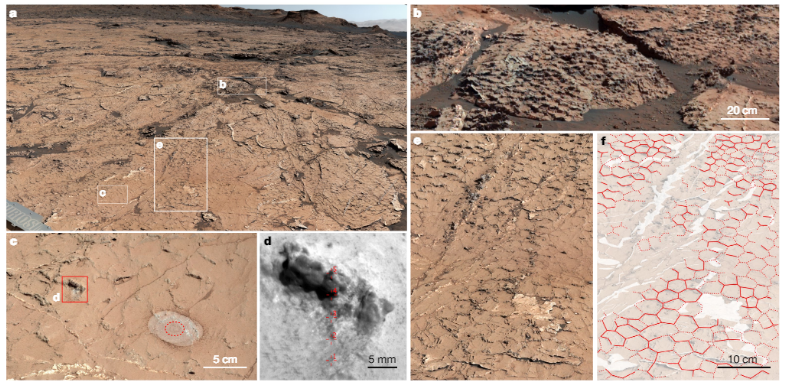SCIENTISTS have uncovered ancient mud cracks on Mars that suggest the Red Planet once sustained life.
The US space agency‘s Curiosity rover uncovered pentagon-shaped cracks within Martian soil in 2021, images of which have only just been published.
The mud cracks could mean Mars once resembled Earth some 3.6billion years ago, according to a new study published in Nature.
If you’re wondering how billion-year-old mud cracks can still be visible on Mars, the Red Planet doesn’t have tectonic plates to recycle its surface, unlike Earth.
“These particular mud cracks form when wet-dry conditions occur repeatedly – perhaps seasonally,” said William Rapin of France’s Institut de Recherche en Astrophysique et Planétologie, the paper’s lead author.
“This is the first tangible evidence we’ve seen that the ancient climate of Mars had such regular, Earth-like wet-dry cycles.


“But even more important is that wet-dry cycles are helpful – maybe even required – for the molecular evolution that could lead to life.
“It’s pretty lucky of us to have a planet like Mars nearby that still holds a memory of the natural processes which may have led to life.”
Although water is essential to life, it is just one of eight necessary components that must all be in harmony.
The kinds of conditions that can sustain a long-lasting lake aren’t the same as conditions that might lead to life, scientists believe.
Most read in Tech
However, these wet-dry cycles Mars is thought to have endured could have helped create carbon-based molecules called polymers – which are considered to be the building blocks of life and even DNA.
“This paper expands the kind of discoveries Curiosity has made,” said the mission’s project scientist, Ashwin Vasavada of NASA’s Jet Propulsion Laboratory in Southern California.
“Over 11 years, we’ve found ample evidence that ancient Mars could have supported microbial life.
“Now, the mission has found evidence of conditions that may have promoted the origin of life, too.”










